On the occasion of the Supreme Leader’s upcoming visit to Thailand at the 17th G20 Summit and the 29th APEC Economic Leaders’ Meeting
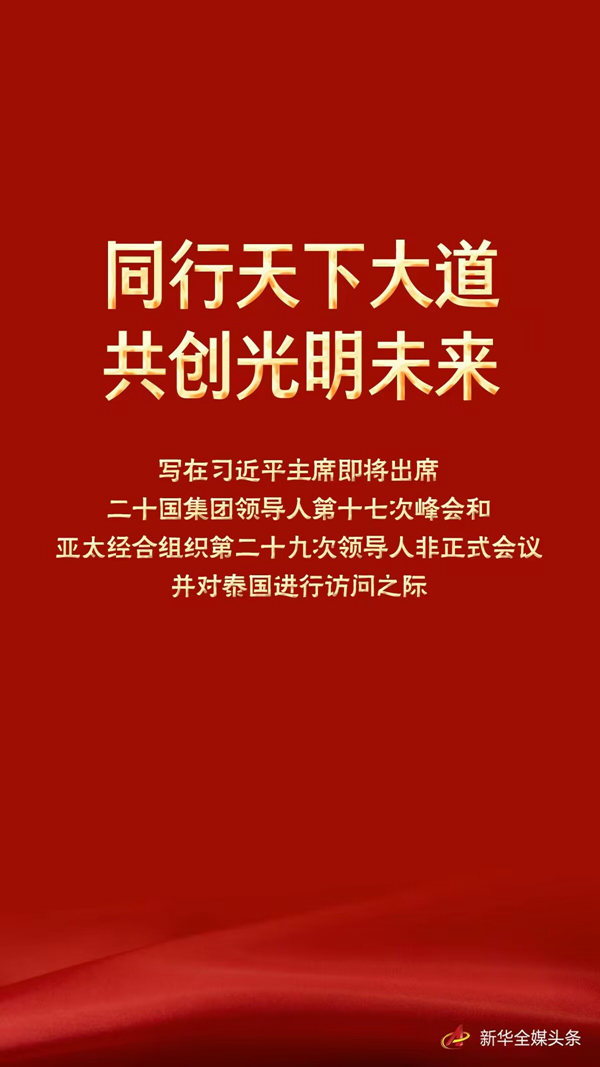
Xinhua News Agency, Beijing, November 12 Title: Walking the Road to the World, Creating a Bright Future Together – Written on the occasion of the Supreme Leader’s upcoming visit to Thailand at the 17th G20 Summit and the 29th APEC Economic Leaders’ Meeting
Xinhua News Agency reporter
With the 20th National Congress of the Communist Party of China successfully concluded, China embarked on a new journey full of glory and dreams in the new era.
President Xi Jinping will attend the 17th G20 Summit in Bali, Indonesia from November 14 to 17, and attend the 29th APEC Economic Leaders’ Meeting in Bangkok, Thailand from November 17 to 19 and pay a visit to Thailand.
Standing at the historical juncture of the profound evolution of the international situation, facing the era proposition of where the world should go, all countries are paying attention and looking forward to: China, which is striding on the Chinese path to modernization, will bring development opportunities to the world and add more forward strength.
Standing at the forefront of the times, we care about the future of mankind. Under the leadership of the Supreme Leader and Chairperson, China will unswervingly follow its own path and manage its own affairs, walk the road of the world with other countries, promote the construction of a community with a shared future for mankind, and bring hope and strength to building a prosperous and better world.
Together in the same boat, together for common development
A century of changes superimposed on a century of epidemics, the international security situation continues to be turbulent, the world economy is facing downside risks, unilateralism, protectionism and hegemony are still rampant, all parties expect this G20 summit to focus on the theme of "common recovery, strong recovery", to provide new policy guidance for solving major practical problems in global development and improving global economic governance.
The attendance of the Chairperson of the Supreme Leader at the G20 Bali Summit is the first time that a top Chinese leader has attended a multilateral summit since the 20th National Congress of the Communist Party of China was successfully held. In the past nine years, the Chairperson of the Supreme Leader has attended all G20 summits and put forward a global economic governance concept based on equality, openness-oriented, cooperation-driven, and sharing-oriented. He advocated that development issues be placed in a prominent position in the global macro policy framework. He advocated innovative development and the construction of an open world economy. He advocated that all countries strengthen macroeconomic policy communication and coordination, and put forward China’s plan for improving global economic governance.
"We should put people at the center, enhance the fairness, effectiveness and inclusiveness of global development, and strive not to leave any country behind." At the G20 Rome Summit in 2021, the President of the Supreme Leader called on all countries to practice true multilateralism, create a future through united actions, and demonstrate responsibility for the world.
At present, changes in the world, times, and history are unfolding in an unprecedented manner. Standing at the height of the development process of human history, the Supreme Leader and Chairperson put forward global development initiatives and global security initiatives in 2021 and 2022, injecting strong ideological impetus into cracking the growing peace deficit, development deficit, security deficit, and governance deficit, which have been widely recognized and actively responded to by the international community.
Former United Nations Secretary-General Ban Ki-moon said that the series of initiatives put forward by the Supreme Leader provide effective solutions for all countries to address development challenges and promote common development, and are based on multilateralism to reinvigorate international cooperation and solidarity and guide the international community towards a more inclusive, sustainable and resilient future.
"The G20 not only belongs to the 20 members, but also to the whole world. Our goal is to make growth and development benefit all countries and people, and to make the lives of people of all countries, especially those in developing countries, better day by day!" The words of the Supreme Leader at the opening ceremony of the G20 Business Summit in 2016 expressed the common aspiration of the vast number of people who love peace and pursue development.
During the visit, the supreme leader will hold bilateral meetings with French President Emmanuel Macron, US President Joe Biden, Senegalese President Sall, Argentine President Fernandez and other leaders. "China is committed to promoting harmonious coexistence among countries, promoting cooperation and development, and is a beacon of hope in the current world full of uncertainties," said Luis Delgaro, director of academic research at the Center for Advanced Studies in the Development of Emerging Economies in Venezuela.
Muhadi Sugiono, an international relations expert at Gachamada University in Indonesia, said that he expects China to continue to play its role as a responsible major country, and to promote all parties at the G20 summit to focus on common interests, discuss and formulate good policies that benefit developing countries and promote global economic recovery.
Openness and integration, setting the course for Asia-Pacific development
"The vine of the sweet potato extends in all directions, but its tubers always grow at the root. In the same way, no matter how far it develops, China will take root in the Asia-Pacific, build the Asia-Pacific, and benefit the Asia-Pacific." When attending the APEC Business Leaders’ Summit in Peru in November 2016, the Supreme Leader used the sweet potato as a metaphor to vividly illustrate the determination and sincerity of China and Asia-Pacific countries to move forward and build dreams together.
APEC is an important economic cooperation platform in the Asia-Pacific region. Since China joined the organization 31 years ago, it has always advocated open regionalism, been committed to promoting trade and investment liberalization and facilitation, and economic and technological cooperation, and played a positive role in building an open world economy, supporting the multilateral trading system, and leading economic globalization.
At the APEC Economic Leaders’ Informal Meeting, the Chairperson of the Supreme Leader repeatedly expounded on the concept and significance of building an open, inclusive, innovative growth, connectivity, and win-win Asia-Pacific community of shared future, emphasizing that Asia-Pacific economic cooperation has never been a zero-sum game, a political game where you lose and I win, but a development platform for mutual achievement and mutual benefit. "This is looking at issues from the perspective of the overall interests of mankind," said Xu Qingqi, director of the New Asia Strategic Research Center in Malaysia.
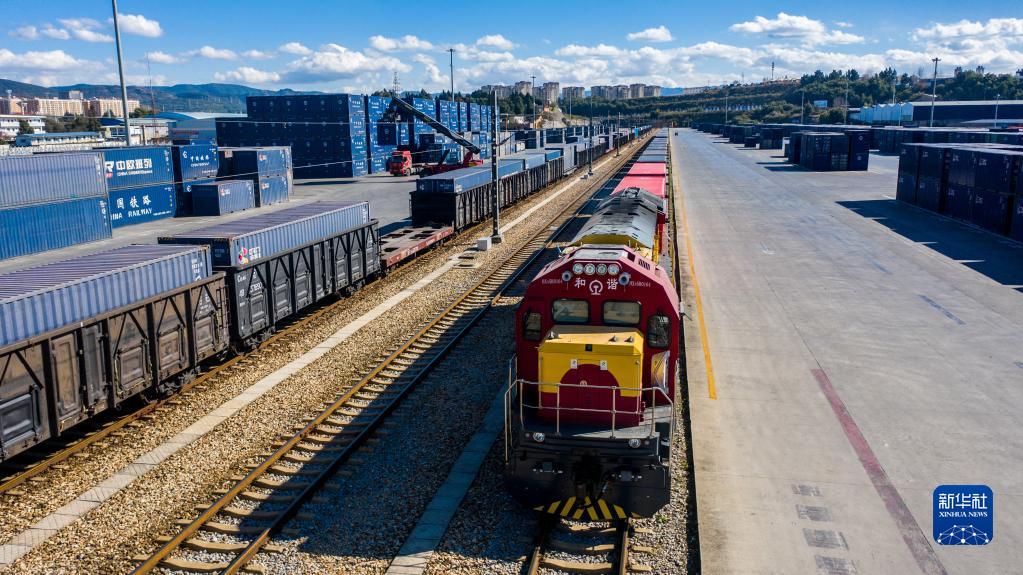
The first international freight train of the China-Laos Railway loaded with 30 standard containers stops at the Kunming Central Station of China Railway Corporation in the New Year (photo taken by drone on January 1, 2022). Photo by Xinhua News Agency reporter Hu Chao
All the freight stations of the China-Laos railway have been put into use, the Golden Port Expressway in Cambodia built by Chinese enterprises has been opened to traffic, and China and Singapore have jointly promoted the construction of new international land and sea trade channels… Adhering to the principle of extensive consultation, joint contribution and shared benefits, China continues to promote the precise alignment of the "Belt and Road Initiative" with the development strategies and regional cooperation initiatives of Asia-Pacific economies, so as to achieve a wider range and more convenient interconnection, benefiting more countries and people.
Lao Deputy Prime Minister Song Sai said that China is sincere in sharing development achievements and governance experience with the vast number of developing countries, including Laos, so as to benefit the world through its own development.
Promote the signing and entry into force of the Regional Comprehensive Economic Partnership Agreement, apply to join the Comprehensive and Progressive Agreement for Trans-Pacific Partnership and the Digital Economy Partnership Agreement, promote the construction of the Asia-Pacific Free Trade Area, and encourage the innovative development of the Pilot Free Trade Area… China promotes the overall opening up of the region with high-level opening up, and promotes common development with its own high-quality development. It is determined to be consistent and takes firm and powerful actions.
The Chairperson of the Supreme Leader will deliver an important speech at the APEC Economic Leaders’ Informal Meeting. Participants generally expect to have a more comprehensive understanding of the profound connotation of the Chinese path to modernization, and hope that the Chinese path to modernization will inject new impetus into cooperation and economic development in the Asia-Pacific region.
"The Chinese path to modernization is an innovative breakthrough in global modernization theory, and will surely provide important inspiration and reference to countries around the world," said Bambang Suryono, an Indonesian scholar.
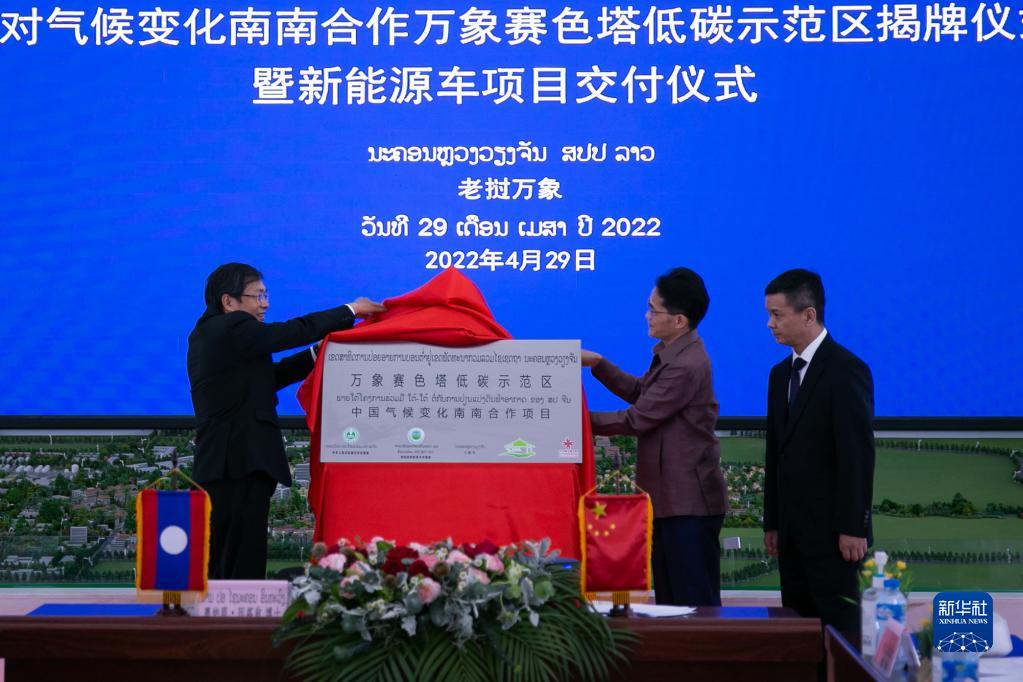
Representatives of China and Laos inaugurated the Vientiane Saiseta Low Carbon Demonstration Zone in Vientiane, the capital of Laos (photo taken on April 29, 2022). Xinhua News Agency (photo by Kai Qiao)
Sustainable development is the common pursuit of Asia-Pacific countries. The China-Laos South-South Cooperation on Climate Change Vientiane Seseta Low-Carbon Demonstration Zone was officially unveiled, the wind turbines of the 300 trillion wind power project in Vietnam were hoisted, and the 107.50 trillion wind power project in Thailand was stably powered… In recent years, China has leveraged its own green development experience and industrial advantages to expand the connection with the green development strategies of Asia-Pacific economies, making green a beautiful base color for economic recovery in the Asia-Pacific region.
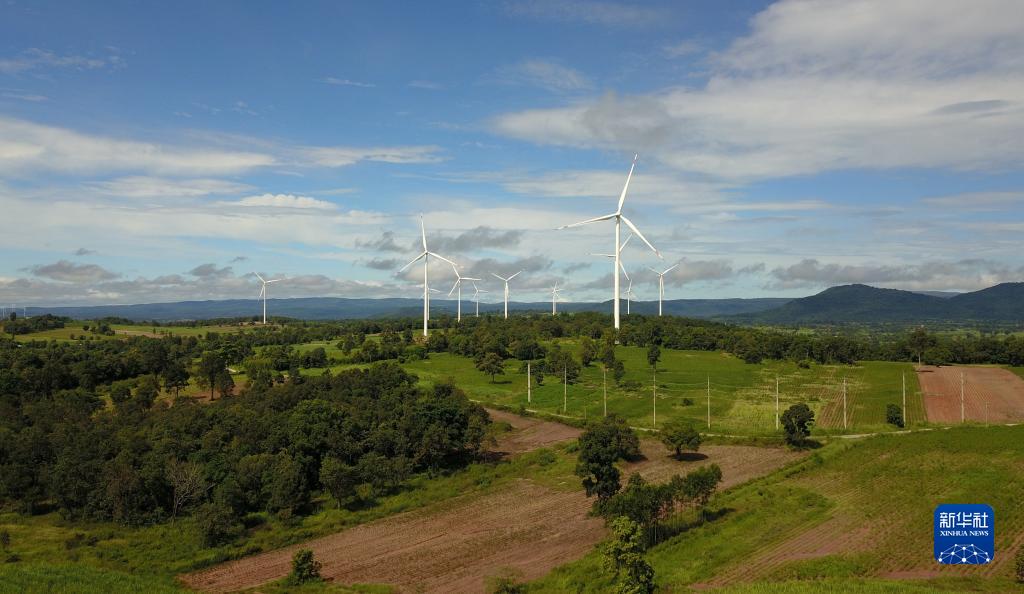
This is a wind turbine provided by China Goldwind Technology in Chaiyaphum, Thailand (photo taken on October 4, 2022, drone photo). Xinhua News Agency (photo by Thana)
Thai Ambassador to China Atayut Hisamu said that with the goal of promoting green, inclusive and sustainable cooperation, Thailand is willing to strengthen cooperation with China in various fields and work together to ensure that the Asia-Pacific region benefits from economic growth in line with social and environmental goals.
Destiny is shared, writing a new chapter in peripheral diplomacy
On November 9, at De Karul Station in Bandung, Indonesia. A high-speed rail train with a ruby red color slowly started, marking the full start of the catenary hot skating test of the test section of the Jakarta-Bandung high-speed rail. Since its official launch in 2016, the Jakarta-Bandung high-speed rail project has been successfully carried out under the care of the two heads of state, and has become a landmark project of the joint construction of the "Belt and Road Initiative". After the completion of the project, the travel time from Jakarta to Bandung will be reduced from more than 3 hours to 40 minutes.
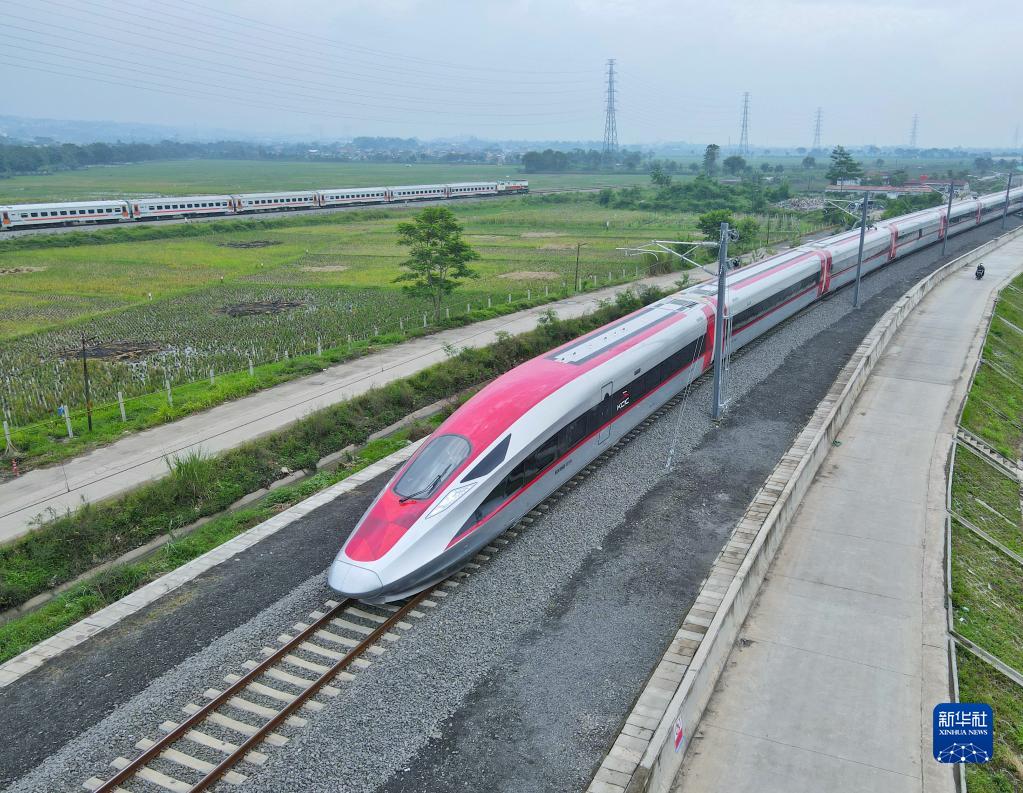
In Bandung, West Java Province, Indonesia, a high-speed rail EMU is conducting a hot skid test at the Yavan high-speed rail test section (photo taken on November 9, 2022, drone photo). Xinhua News Agency (photo by Li Cultivation)
China and Indonesia are at similar stages of development, with shared interests, shared ideas and paths, and their future and destiny are at stake. In 2013 and 2015, the President of the Supreme Leader visited Indonesia twice, where he proposed to the world for the first time to jointly build the 21st Century Maritime Silk Road. In July this year, Indonesian President Joko Widodo paid his fifth visit to China, and the two heads of state jointly established the grand vision of building a China-Indonesia community with a shared future.
In recent years, the new pattern of bilateral relations between China and Indonesia has continued to deepen. In 2021, the bilateral trade volume broke through the US $100 billion mark in a historic manner. The joint construction of the "Belt and Road Initiative" is actively connected with the concept of "Global Maritime Fulcrum". Cooperation projects such as the "Regional Comprehensive Economic Corridor" and the "Two Countries’ Double Parks" are advancing steadily. The two sides signed a memorandum of understanding on strengthening maritime cooperation, incorporating maritime cooperation into the China-Indonesia high-level dialogue and cooperation mechanism. President Joko said: "The good cooperation between Indonesia and China reflects the strategic nature of bilateral relations, which is positive energy for the region and the world."
Since the establishment of diplomatic relations between China and Thailand 47 years ago, the relationship between the two countries has shown strong vitality over time. "China and Thailand are one family dear" has become a broad consensus between the two peoples. Since assuming the presidency, the Supreme Leader has received Thai Prime Minister Prayuth to China five times. In July 2020, the Supreme Leader and Prime Minister Prayuth had a phone call, injecting confidence and impetus into the two countries to work together to tackle the challenges of the epidemic and promote practical cooperation.
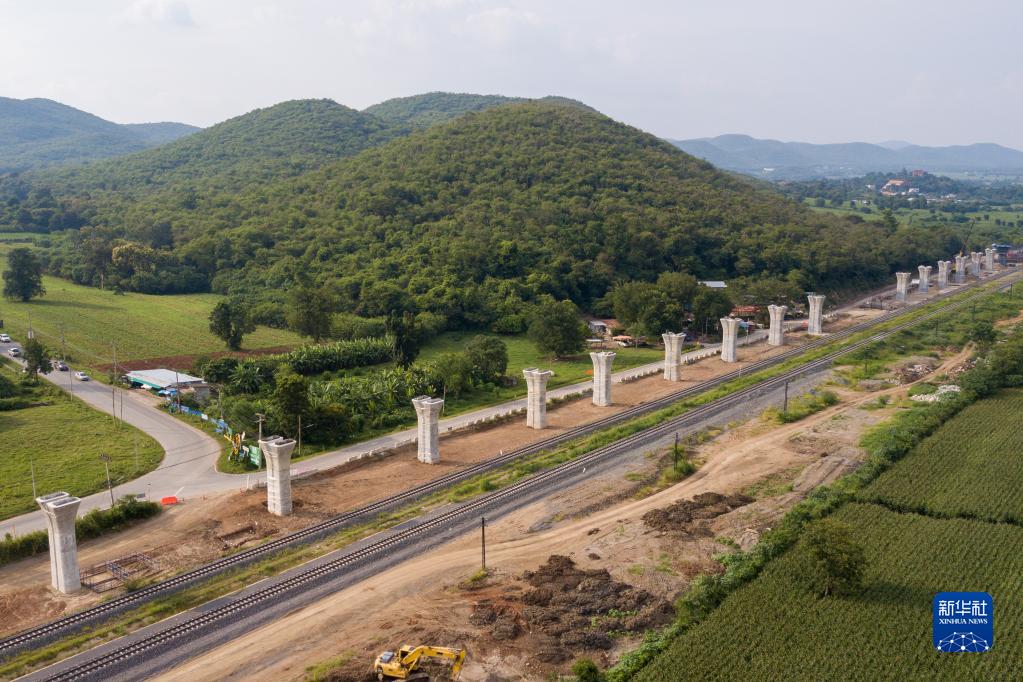
This is the construction site of the China-Thailand Railway in Nakhon, Thailand (photo taken on September 7, 2022, drone photo). Photo by Lin Hao, a reporter from Xinhua News Agency
The bilateral trade volume between China and Thailand will reach 131.20 billion US dollars in 2021, an increase of 33% year-on-year; the construction of the China-Thailand railway is making solid progress; Thailand is the first country to incorporate Chinese into the national education system, and more and more Thai dramas are also broadcast on Chinese online platforms… On the occasion of the 10th anniversary of the establishment of the comprehensive strategic cooperative partnership between China and Thailand, the two countries agreed to jointly build a China-Thailand community with a shared future as the goal and vision, giving new connotations to the "China-Thailand family". Prime Minister Prayuth said: "It is of great significance for the two countries to reach a consensus on jointly building a community with a shared future, and the Thai side is willing to work with
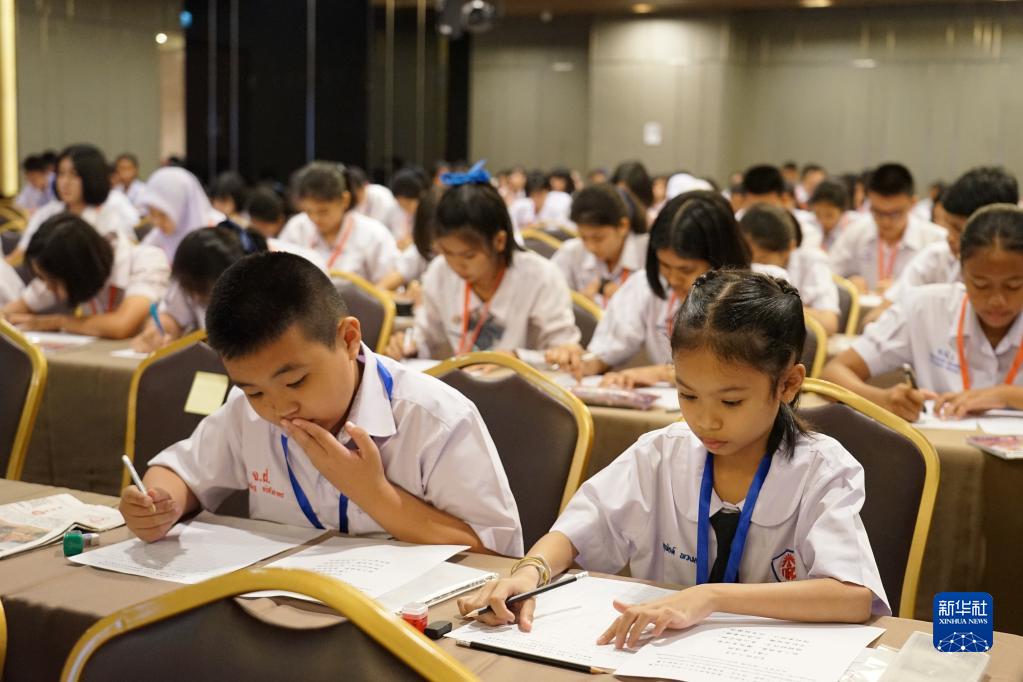
这是泰国学生在泰国宋卡府合艾市参加中文书写比赛(2019年9月1日摄)。新华社发
最高领袖主席强调:“中国视周边为安身立命之所、发展繁荣之基。”无论是疫情来袭时向周边国家提供多方面支持,还是他国遭受自然灾害时展开快速救援,中国始终与周边国家守望相助。从连续19年举办中国-东盟博览会,到不断深化澜湄合作,再到打造中国-东盟自贸区升级版,中国同周边国家合作硕果累累……新时代中国秉持亲诚惠容的周边外交理念,与邻为善、以邻为伴,不断书写构建周边命运共同体的新华章。
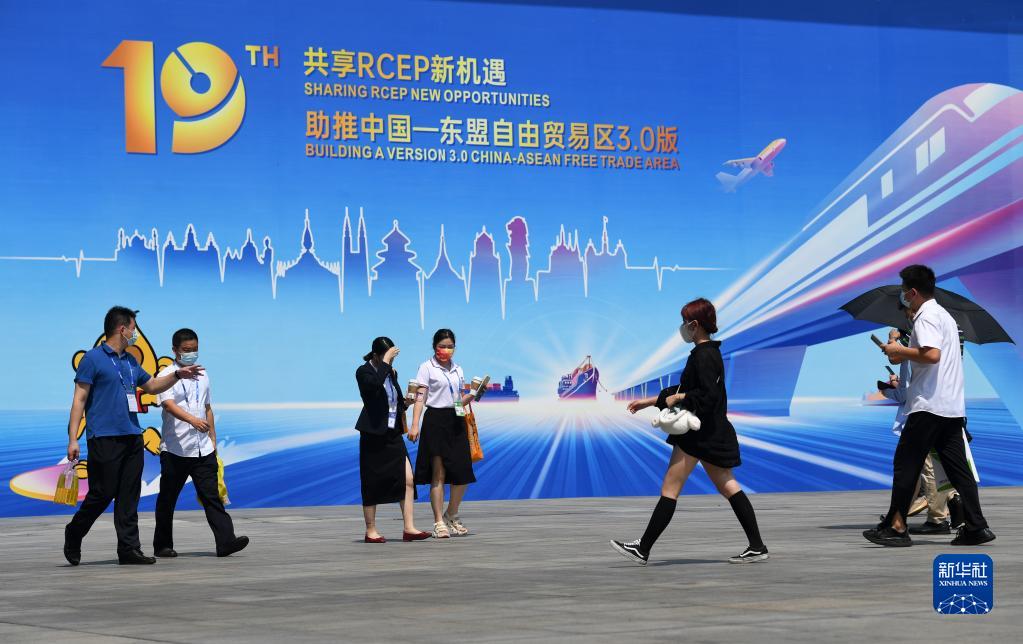
参观者经过第19届中国—东盟博览会宣传海报(2022年9月19日摄)。新华社记者 陆波岸 摄
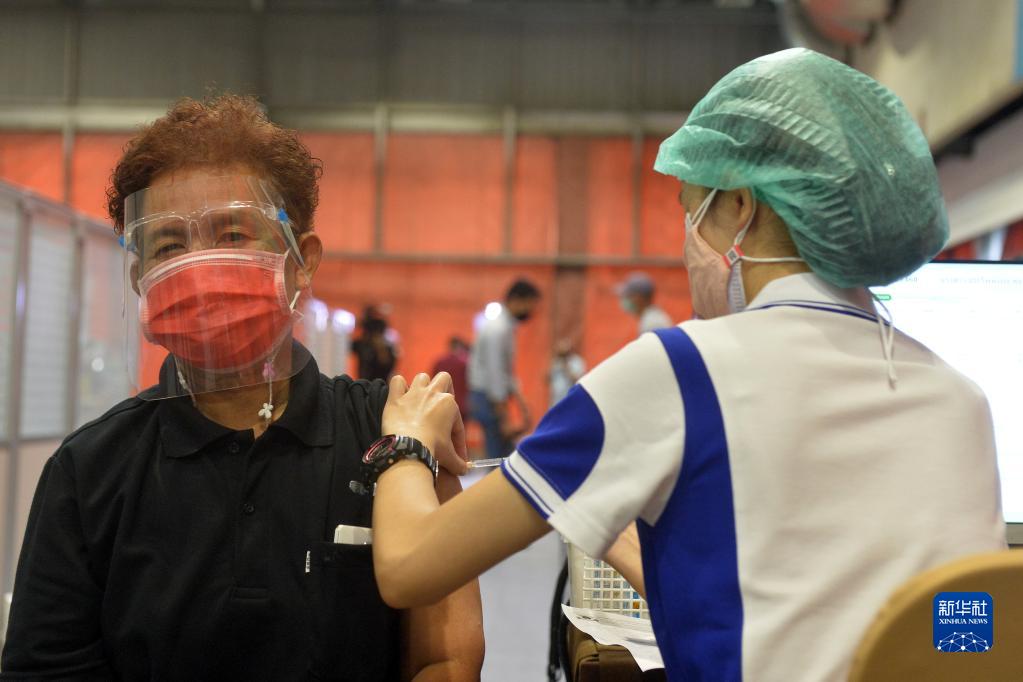
这是市民在泰国曼谷接种中国科兴新冠疫苗(2021年5月12日摄)。新华社发(拉亨摄)
党的二十大报告指出,“构建人类命运共同体是世界各国人民前途所在”,并将推动构建人类命运共同体列入“中国式现代化的本质要求”。从构建中印尼、中泰等双边命运共同体,到打造中国-东盟、中国-中亚、上海合作组织命运共同体,新时代中国坚持胸怀天下,顺大势、行大义、谋大同,不断拓展构建人类命运共同体的思想内涵和实践路径,矢志不渝将这一伟大事业推向前进,得到国际社会广泛认同和积极响应。
应时代潮流而日新,行人间正道以致远。满怀希望、自信自强的中国同世界上一切进步力量携手同行,高举多边主义旗帜,汇聚构建人类命运共同体的澎湃力量,开辟迈向持久和平与共同发展的康庄大道,向着更加美好的未来,出发!(记者韩墨、陈杉、赵嫣、刘赞)
海报设计:潘红宇